Student_Labs
The Tasmeem Hybrid Making Laboratories are full-scale explorations done through the very act of making. For five days, groups made up of 20-25 students and faculty, led by invited international designers and artists, will design and create full scale semi-permanent structures (walk-in sculptures), performances or other catalytic interventions.
Location: All the Laboratories will take place within or adjacent to the grounds of the Mathaf: Arab Museum of Modern Art, where both interior spaces (inside the museum galleries) and exterior areas (on the paved grounds and the flanking garden) will be available.
Date: Sunday 10 to Thursday 14 March
Time: 9am to 5pm (with a break from 12pm to 2pm)
Registration for the labs has now closed.
> Kristin Bille (A - Alpha)
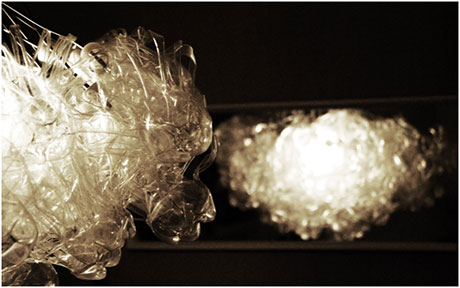
Bio
I am a MFA designer who works with product, fashion, graphic and interior design. My projects balance between the design and more art oriented areas and they are often conceptual where the materials and background story act as an important component. I received my degree from HDK, Gothenburg, Sweden but have also studied at Accademia Italiana, Florence, Italy and different pre-educational studies.
After completing my education I have worked as a freelance designer with different kinds of projects and exhibitions, both in Sweden and abroad. Combined with my design and artistic projects I also work at the Art College in Gothenburg, where I teach interior and product design.
Lab Abstract
My idea for the Tasmeem Doha 2013 Lab is to bring and combine something from my background into yours and make a hybrid of these two worlds. The hybrid will be a group of products, a small furniture family that is combined with various fashion and graphic elements. The focus will be with the fashion field. The products will be inspired by the city of Doha but catalyzed by Swedish design history.
In fashion design one creates pieces - clothes and accessories - that in one way or another are adapted to the human form. In furniture design the chair uses a similar set of constraints, and become a direct reflection of the human body. I will bring five chairs and stools in flat packages to the Lab. They all come from Ikea, are made out of wood, chosen from the lowest price range (total worth approximately 70 Euro). These chairs will be used as a starting point from which a hybrid interpretation combining the most notable qualities of Doha are fused with an artifact originating with a Swedish icon.
> Lynne Bruning (B - Bravo)
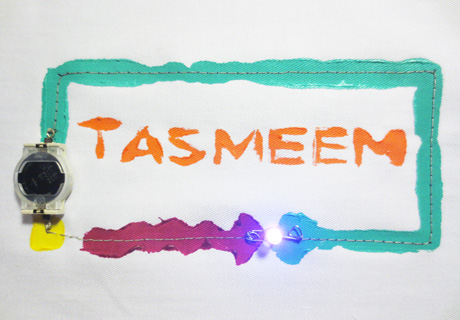
Bio
Lynne Bruning is the creatrix of exclusive wearable art, eTextiles and adaptive technologies. Fusing together her BA in neurophysiology from Smith College, Masters in Architecture from the University of Colorado and her family history in textiles Lynne jets thru the universe creatively cross-pollinating the worlds of science, textiles, fashion and technology. Her comprehensive hands-on electronic textile classes infect fiber artists, electrical engineers and computer hacks with the love of wearable computing and spawn community based eTextile groups. Using the internet to build a global eTextile community she contributes to Instructables, films How to Videos and hosts a monthly eTextile Lounge uStream: a global hacker space. Lynne’s innovative award winning designs will inspire and challenge you to see beyond the fabric and into today's technologically complex and interactive surface designs.
Lab Abstract
Handcrafted fiber based wrist cuffs interwoven with conductive thread, electronic sensors, actuators and microprocessors. In the morning sessions lab participants will engage in a discussion of presentation topics, material samples and finished cuff examples. During the afternoons we will design, prototype and create these fashionable wearable computing artifacts that sense, interpret and react to the user as well as the built environment. During the conference these physical computing artifacts will be displayed within Mathaf as well worn by Lab participants. The display’s design will encourage conference attendees to wear the wrist cuffs as an additional means of interacting with each other as well as with the surrounding building. Interactive architectural based computing will be achieved by placing digital activators throughout the museum. These RFID and Bluetooth devices will trigger the sensor-laden cuffs to illuminate, vibrate and sound off. The best part of all? When the Lab participants become the teachers as they share their knowledge with conference attendees.
The interweaving of electronics, computers and textiles provides the Lab participants a cross-disciplinary learning experience. The creation of the wrist cuff allows us the opportunity to think, prototype and blend the materials and methods of technology, fashion and architecture.
The artifacts that we create will be imperfect. They will be rudimentary, messy and hopefully funny looking. These educational devices are stepping stones into an immersive experiential learning process that is cross cultural, multi disciplinary and infects the participants with an intimate hands on process of making, doing and sharing.
> Corin Hewitt (C - Charlie)
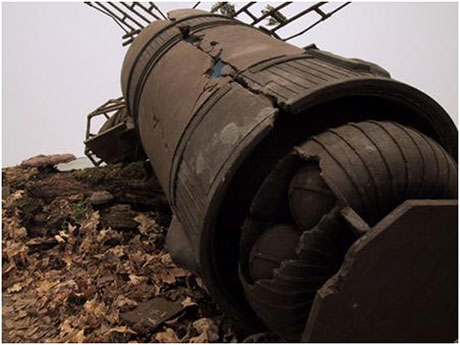
Bio
Corin Hewitt (b. 1971) is an American sculptor and photographer. Hewitt received a BA from Oberlin College and an MFA from Milton Avery School of Art at Bard College. His work has been shown widely in the U.S. as well as Europe. He has had solo exhibitions at the Whitney Museum of Art and The Seattle Art Museum. He has been included in group exhibitions at the Whitney Museum of Art in New York, the Astrup Fearnley Museum in Norway, the Wanas Foundation in Sweden, and with the Public Art Fund which commissioned a public project in Brooklyn, NY. Hewitt is an Assistant Professor of Sculpture and Extended Media at Virginia Commonwealth University. Hewitt is represented by Lauren Gitlen Gallery in New York.
Lab Abstract
In this five-day laboratory workshop, students will examine the interdisciplinary ways that the two dimensional world of images can provide a host of possibilities for understandings, misunderstandings, representations and misrepresentation in the three-dimensional world. We think through making as we turn images into objects and then those objects back into images. We will look at how we understand relationships of parts as wholes, the color of light as part of the color of objects and how object making can illuminate, expand, and explore the world of images.
After an introductory lecture on relevant historical and contemporary practices that engage ties between sculpture and photography, the class will be divided into two groups that will work on opposite sides of the studio. They will be exchanging images and objects with the other individuals from the other group in order to explore relationships between images and objects.
The students will need access to a digital camera, email, a very simple color printer, and a variety of simple sculptural materials (ie. wood, plaster, wire, wax and paint).
> Josh Hoeks & Ryan Rasmussen (D - Delta)
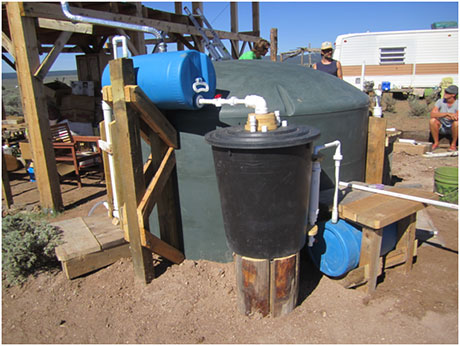
Bios
Josh Hoeks
Josh Hoeks is an artist working through a confluence of sculpture, design and technology in order to intervene, interrogate and reimagine the everyday. Rather than seeing life and art as separate activities his work seeks to blur the envelops that regulate creativity, prompting a double move: one that opens-up notions of art from merely representation and closes-in on the everyday as full of aesthetics. In this way, his practice employs both critical inquiries and poetic solutions so as to politicize the way we live by reclaiming creative actions. Hoeks’s work attempts to ecologize rather than modernize suggesting that that there is no outside, when there always exists another envelope in which we are enfolded.
Ryan Rasmussen
Ryan Rasmussen is an artist working at the intersection of art and technology in order to dissect notions of cultural production in an age of aesthetic inundation. His work alludes to a culture increasingly infatuated with thing-ness and prods the sincerity of globalizations utopic claims. Through gestures of reclamation and transformation, Ryan’s work calls for reflection on the ways in which products embody social values and transform cultural aesthetic through objectification of subjectivity. In various permutations of interactive installation, design, video, and sculpture, Rasmussen presents participants with an experiential moment that echoes the noisy atmosphere of an insatiable consumer based world, nourished by the malleable identities of products.
Lab Abstract
This is a proposal for a five day workshop where students learn basic bicycle maintenance, how to construct simple solar power systems, and engage in critical discussions about the relations between art, hybridity, design and ecology. By working on bikes and making solar panels students will be asked to reconsider their relation to objects by contrasting notions of obsolescence with fix-it and do-it yourself approaches. By adding a solar power system to a bicycle, students will participate in the making of a hybrid object that reconsiders its transformation from a mere mode of transportation to a vehicle that questions the politics of how space is (re)designed. By inviting students to take these hybrid bikes for a ride, they will be asked to consider the importance of intervention and performance as a means for establishing the public sphere as a space for creative expression. By using the solar energy collected from their journey to illuminate a sculpture at Mathaf (made by the lab leaders), students will be asked to consider how the term hybridity attempts to question the stability of boundaries (i.e., institutions, identity, and artistic production).
As an approach to contemporary art practice, the workshop format is exciting to us because it makes visible how the production of art, and by extension all objects, exist as an assembly of things (ideologies, relations, emotions, materials, etc.) In other words, working and learning together shows how making is always a collaborative endeavor. In this way, hybridity can be understood as a condition, one that attempts to draw out of the shadows the number of things that are required in order for any particular object, event or relation to exist. Whether a bicycle, solar panel, skyline, climate change, teacher or student these entities are always, already hybridized, which is to say that their existence is possible through a complex network of interdependent entities.
Bearing this in mind, the things we make can have an impact over a wide range of time and space. The nano, local, global, geological are all terms that describe the vast expanse of scale that we now have to deal with in an ecological era. Moreover, when attempting to reflect on the ecological impact of the things we make it becomes imperative that we hold a mirror up to the ideologies that characterize our contemporary world view: can the vast networks of communication and transportation, and the mandates of growth, progress, and development make good on their promises of happiness? It turns out that we are leaving quite a trail of destruction on our path towards modernization. In this sense, hybridity speaks to a burgeoning ecological awareness that strives to contend with the harmful effects of globalization. For us, this marks a shift in awareness as well as desire: from the drive to modernize to the need to ecologize.
So far we have touched on a cache of ideas that relay how we are approaching the notion of hybridity as well as a rough sketch of the activities for the five day lab. As mentioned above we are interested in making a sculpture for the Mathaf exhibit that works in tandem with the bicycle project made with students. The basic idea is to construct corral that would provide a place for the bicycles to reside when not in use.
Additionally, the bicycle corral would implement a simple LED lighting system that would serve as a means for showing the energy that the hybrid bikes were able to collect. The following introduces some ideas for the forms that this bicycle corral might take. The list that follows is free to change, open to critique, and welcoming of other suggestions.
Prospective 1: Corral/Tower
A sculpture that makes reference to Doha Tower. The tower would be assembled in a fashion similar to that of camping tents so as to use light and flexible materials. After the bicycles are taken outside and into sunny weather their batteries will be charged and upon return to the gallery space at Mathaf they can park at the corral/tower, plug-in and power an array of LED’s which illuminates the tower.
Prospective 2: Corral/Picnic Table
A sculpture that makes reference to a picnic table. The bicycles would individually power street lamp like forms that illuminate the picnic table. This scene would serve to host conversation, social gathering, etc. and would become a site for reflection on city development, bicycle use, alternative power etc.
Prospective 3: Corral/Kiosk
A sculpture that makes reference to an informational kiosk and maintenance station.
> Kelly Hutzell, Rami El Samahy, Mary-Lou Arscott & Nick Durrant (E - Echo)
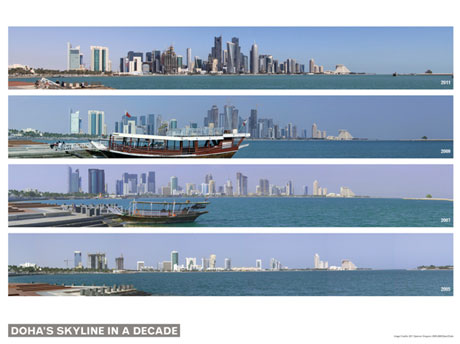
Bios
Kelly Hutzell, urban designer
Kelly Hutzell is an Associate Teaching Professor of Architecture at Carnegie Mellon University. She has been teaching at Carnegie Mellon since 2005, when she was awarded the first Lucian and Rita Caste Chair in Architecture and Urban Design. She currently holds a joint appointment between the Carnegie Mellon campuses in Pittsburgh, Pennsylvania and Doha, Qatar, teaching architecture and urban design studios and seminars. Courses include the Urban Laboratory studio, Urban Design Methods and Mapping Urbanism.
Ms Hutzell is a licensed architect. As a senior associate at over,under, a Boston-based multi-disciplinary design firm, she specializes in international urban design projects and the design of cultural and institutional buildings. Recent projects include an ideas competition for the South Harbour of Helsinki, Finland; the architectural design controls for Sowwah Island, Abu Dhabi; and concept studies for a Design Center in Aswan, Egypt.
Rami el Samahy, urban designer
Rami el Samahy is an Assistant Teaching Professor of Architecture at Carnegie Mellon University, where he has been teaching since 2006. He holds a full-time joint appointment between the Carnegie Mellon campuses in Pittsburgh, Pennsylvania and Doha, Qatar, teaching architecture and urban design studios and seminars. Courses include the Urban Laboratory studio, Systems studio, Middle Eastern Cities and a new course entitled “The Future of Cities / Cities of the Future.”
Mr. el Samahy is a founding partner of over, under, a multi-disciplinary studio (graphic design, interior design, architecture and urban design) with projects in the Middle East, Central America and the United States. Currently, the firm is working on a number of projects including the completion of a house in Cairo, graphic identity work for the de Cordova Sculpture Museum in Boston, the Mayan Museum of America in Guatemala and architectural design controls for Sowwah Island, Abu Dhabi’s new central business district.
Mary-Lou Arscott, construction specialist
Mary-Lou Arscott is a British architect who has been involved in design centered practice and radical construction initiatives since qualifying in the 1970’s. After completing her diploma at the Architectural Association in London she studied carpentry, joinery and wood machining. She worked for ten years as a carpenter/cabinet maker and educator, with 5 others built and designed a cooperative house and initiated two EU funded training schemes in London to encourage women to enter the building industry.
Her architectural work ranges across public and private sectors and combines elegance with economical use of materials. The projects reflect careful attention to the needs of client and user whilst involving the creative contribution of the builder.
Nick Durrant, Interaction designer
Director, Master of Tangible Interaction Design, Carnegie Mellon Pittsburgh
Nick Durrant has worked in interaction design for over a decade. After several years in Silicon Valley, via Taligent, IBM, and 280 Inc. developing group, collaboration environment, and social software such as 'Places for project teams' and 'Meeting Centre' he returned to the UK to bring interaction design strategy to Metadesign, Icon MediaLab and Futurebrand Digital. Client work at from this time includes research, strategy and design for Bristol Legible City, Orange, Skoda, Bosch, Telia, GSK, MSDW, Bank of America, Artranspennine 98, Telefonica, Lastminute.com, UPC/Chello, and Peoplecom. Bristol Legible City won an environmental design effectiveness award and is widely held up as a best-practice example in urban design. After serving two years as co-chair of Carnegie Mellon’s School of Design’s prestigious Nierenberg chair, Mr. Durrant is currently acting director of the School of Architecture's Master of Tangible Interaction Design.
Lab Abstract
This lab intends to build a machine that brings the city — both physically and virtually — into the museum, and vice versa. It will augment the conference themes of “hybrid making” and “made in Doha” with the notion “found in Doha.” Collectively, the lab will create a curiosity cabinet of physical and digital found objects that reflect the city’s fascinating cultural dynamics.
Doha today finds itself at a moment of particular significance in its history. Unparalleled wealth and growth, massive infrastructure projects, investments in culture, education and sports, and a special relationship with the surrounding desert and sea.
While unique in its own right, it is also representative of current and future trends and challenges in urban growth: rapid development, staggering flows of migrant labor, economic and social stratification, and increasing environmental degradation.
This lab will argue that these challenges can be met by rethinking and remaking what we can find here in Doha.
The lab will be led by two urban designers with experience in and knowledge of Doha, an architect with a specialty in construction techniques, and an expert in human computer interaction. Each will bring a certain skill set to the group. Collectively, they will serve as the advisors guiding the design and construction of the artifact.
Lab leaders will then set up student teams to scavenge in the city and its surrounds, to construct the artifact's armature and to program the digital aspects of the exhibition.
Up to 20 students may participate in the lab. It will be open to multiple disciplines, but should be of special appeal to those interested in learning about the city, construction techniques or human computer interaction. Anyone involved can expect to find a number of roles for themselves on the project.
> Roger Kemp & Anthony Fryatt (F - Foxtrot)
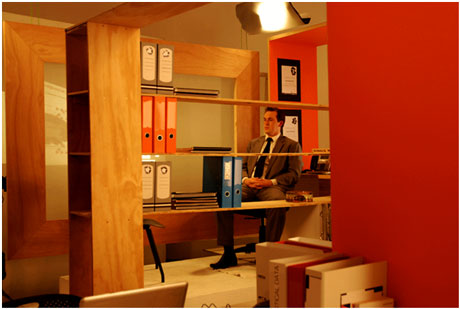
Bios
Anthony Fryatt
Anthony Fryatt is a designer and lecturer within Interior Design Program at RMIT University, Melbourne.
Prior to this he lived in London practicing as an interior designer and has a background in fine art. He is interested in how the interior is informed, understood and affected by the complex spatial conditions that exist within our mediated society. Anthony has an interdisciplinary, process led practice that spans retail, branded environments through to sets, installations, models and image.
Roger Kemp
Roger Kemp is a spatial designer and Lecturer in the Interior Design Program at RMIT University, Melbourne. His research concentrates on the development of strategies and tactics for the negotiation of space that lead to the production of interiors.
Interior conditions and relations are investigated through the production of spatial artifacts including drawings, film, set design and 1:1 construction. Methods of negotiation, navigation and the creative re-use of existing space are drivers of the research.
Lab Abstract
Making Space: display tactics At the heart of reciprocal exchange between people lies the twin drives of desire and sacrifice: one person's desire for an object, and another's willingness to give up (sacrifice) the object for that desire or its representation (another object or token)' 1 This workshop will examine ideas of ?display' as an arresting spatial tactic and site of encounter. Participants will investigate ?display' from a diverse set of perspectives and references and test these in relation to a variety of spatial scenarios including the street, the window, the retail complex and the domestic environment. We are constantly playing part in a host of different exchanges between others and ourselves. The exchange might be a monetary or social act, formal and systemized or casual and surprising in nature. The etymology of the word ?display' suggests a link to the idea of folding out, a flexing or bending. Within this complex game ?display' plays a pivotal role in the early seduction and subsequent desire that brings about these many exchanges. ?Despite the ever closer influence of media content to our interpretation of urban life physical engagement and encounter remains a powerful factor in the effectiveness of consumption.' 2 We will explore the active condition of display not only as conveyer of information or conspicuous presentation but also as a significant moment in the access and engagement of an interior. Thinking about ?display' as an engaging strategy within an interior allows a speculation upon the powerful nature of exchange that occurs between an occupant and that interior also.
The workshop will enact hybrid strategies that bridge set design, exhibition and retail techniques including the use of scripts, narrative, sequenced spatial scenarios and event. Scenographic consideration of interior space will be used to develop a complexity and fullness of spaces that are both multilayered and simultaneous in their nature. The 1:1 installation will layer up a series of scenes and encounters that allow a multiplicity of approaches re-positioning the occupant and viewer through the space.
1. Cummings, Neil, Marysia Lewandowska, The Value of Things. Basel: Birkhauser, 2000.
2. Chung Chuihua, Judy, Inaba Jefffrey, Rem Koolhaas, Sze Tsung Leong. Harvard Design School guide to Shopping. Cologne: Taschen, 2001.
> Ashley John Pigford (G - Golf)
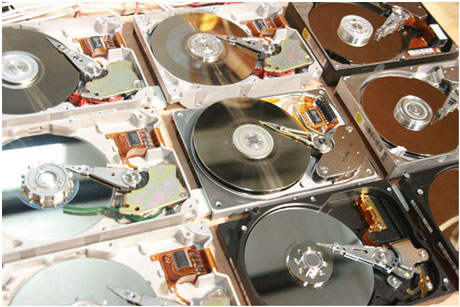
Bio
Ashley John Pigford is an interaction designer working at the intersection of design process and art practice. His cross-disciplinary creative work involves physical computing and post-digital processes in the interrogation of language through digitally mediated experiences. His work manifests as electronic sculpture, interactive installation, performance, video, and print. He received his MFA in Graphic Design from the Rhode Island School of Design after a successful career as a proprietor of graphic design in Los Angeles, CA. He is Assistant Professor of Visual Communications in the Department of Art at the University of Delaware.
Lab Abstract
During this lab experience, students and teachers will create a machine/system for producing a hybrid form of drawing/writing/art-making. Throughout the five-day lab, we will conceptualize, design and produce a form of a ‘drawing machine’ (see references below), based on the participants innate knowledge and experimental curiosity with relationships between the Roman and Arabic alphabetical characters.
Participants in this lab will produce physical prints as artifacts of the conceptual, digital, and mechanical process involved in the creation of a machine, and prints created by the finished machine. These prints and the machine itself, (as a working, interactive sculpture), will be available to exhibit following the lab.
Drawing on my knowledge and experience with physical computing, Computer
Numerically Controlled (CNC) machines, relief printmaking and typography, The machine that is constructed will most likely be based on a 3-axis system, driven by stepper motors and controlled through computer software. However, I am more interested to work with the participants to conceive of a machine that not only can we fully construct in 5 days, but is the result of thinking creatively about translating and interpreting typography and writing of both the roman and Arabic character sets. This intention is to create a machine/system as a tool for the creative process, not simply a tool for typographic production. An alternative approach to this lab is to work with students to conceive of a drawing machine that will produce indeterminate results, and, ‘see what happens’.
> Steven Pippin (H - Hotel)
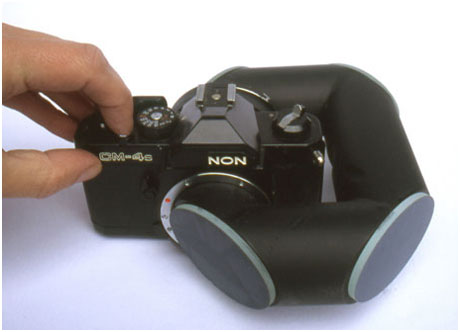
Bio
English photographer and sculptor. After completing a degree in Mechanical Engineering, he took a Foundation course in art at Loughborough College (1981–2) and then studied sculpture at Brighton Polytechnic (1982–5) and the Chelsea School of Art, London (1987). He worked in Berlin on a DAAD scholarship in 1997–8, and was shortlisted for the Turner Prize in 1999. Pippin typically uses objects such as bath tubs, wardrobes and washing machines converted so that they function as cameras. The equipment itself, the process (often filmed) of converting the objects and and their methods of operation are as important as the results; the makeshift cameras and the photographic images produced by them are often displayed together. An essential aspect of these works is that the photographic subject is related to the reconfigured object; for Beach Bath (1983) Pippin converted a bath tub into a pin-hole camera, using it to photograph semi-naked figures on the Brighton sea front. In 1985 Pippin began experimenting with washing machines, leading in 1991 to his first series of Laundromat Pictures. The project culminated in Laundromat–Locomotion (Horse & Rider) (1997; New York, Twelve black-and-white photographs, produced by Gavin Brown's Enterprise), a row of twelve washing machines ingeniously converted into cameras operated by a trip wire. The resulting images of a horse being ridden through the laundromat paid homage to the pioneering experimental photography of Eadweard Muybridge. From 1991 Pippin also constructed a variety of sculptural machines that incorporated sound, vision and movement.
Lab Abstract
During the past few years I have been working on constructing cameras that are focused on their own mechanisms, producing photographs which are concerned with the actual photographic procedure itself, in some cases the photograph is interacting with the camera mechanism, the photographic process recording itself using the same camera. The construction of a completely transparent camera.
A camera system made purely of either glass or Perspex (Plexiglas). In order to produce a photograph the camera would be used in a darkened space and with the aid of a flash unit a number of experimental images would be created of the camera itself using a simple mirror setup. Therefore the image of the transparent camera would be reflected back into itself, at the same size of the camera, therefore the photograph will be the size of the camera. Although this sounds impossible, it is possible to make an image as long as the amount of light is very specifically controlled.
Mobius Camera This idea involves the notion of a mobius photograph, made by tracking the camera through a space which is on the border of interior and exterior so that it produces a single image , combining a 360 degree panoramic. The photograph may also take in the actual camera space itself as part of the subject matter. A far more elaborate idea involves the notion of the camera slowly collapsing and at a certain point the lens comes into contact with the film or paper and then passes through it, as though the camera were turning itself inside out.
Simultaneous Camera the idea of bringing together the subject matter of the photograph with the actual photograph itself (which is the basis of some experiments I’m currently working on with a bullet passing through the negative and then catching the image just afterwards). This might form the basis for some extremely interesting experiments. The camera in this case would be larger, approximately the size of a 10x 8 inch studio camera. The lens would be as large as possible and experiments would consist of part of the subject matter actually passing through the camera body while the image was being produced.
> Sara Shafiei & Ben Cowd (I - India)
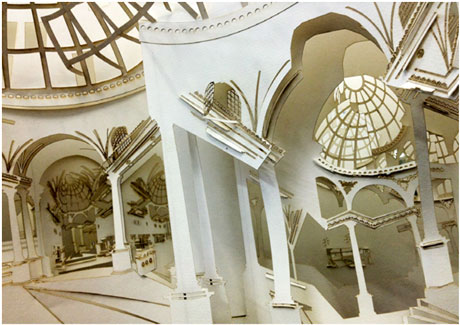
Bios
Sara Shafiei
Partner saraben-studio | Member of horHizon | 1st Year Tutor Bartlett School of Architecture, UCL | Associate Lecturer & Unit Master Oxford Brookes University.
Sara Shafiei graduated from the Bartlett school of Architecture (UCL). She was the Bartlett recipient of the Sir Banister Fletcher Bronze Medal, 3D Reid Prize, and the Hamilton Associates Prize for excellence in design process. In 2008 she also received TECU International Architecture Award and the KPF/ Architecture Foundation Public Space Travel Award, for her research into Architecture and Illusion. Her work has been exhibited internationally including exhibitions at the Museum of Art and Design, New York, Venice Architecture Biennale, London Architecture Festival and the Royal Academy of Art Summer Show 2008, 2009, 2010 and 2012 where she was awarded the Royal Academy of Arts Drawing Prize, and the 2012 Grand Architecture Award. She was a keynote speaker at this years ‘Conversations on Architecture’ conference in Cape Town, South Africa. Shafiei has been published in Bartlett Design: Speculating with Architecture, Architecture Design Magazine, Wallpaper Magazine, London Interiors Magazine, Icon Magazine, Building Design Magazine, The Times, The Architects Journal, and featured on BBC 2's Culture Show. She co-authored 'Digital architecture: Passages Through Hinterlands' - a book celebrating provocative projects from a young generation of digitally enabled designers. Her research with bamboo is also noted worldwide with exhibitions in Bogata, Lima, Kassel and London as well as publications including ‘Visionary Bamboo Designs for Ecological Living’ (co-published by INBAR in Beijing) and ‘Innovation in Bamboo’ (Sandu Publication). Sara is director of Saraben Studio and a founding member of Horhizon, a research by design network, bringing together academics across various disciplines to create and conduct research themes and topics, in order to generate a wider architectural discussion and bring forward new and emerging fields of theory and architectural expression. Shafiei teaches at the Bartlett School of Architecture (UCL) and is an Associate Lecturer at Oxford Brookes University. She is a visiting critic at The Architecture Association (AA), Westminster University, Cardiff University, Royal College of Art (RCA), VCUQatar and was a visiting lecturer at Ecole Spéciale d'Architecture – Paris.
Ben Cowd
Partner saraben-studio | Member of horHizon | Senior Lecturer The Leicester School of Architecture, DMU
Graduating from the Bartlett in 2007, Ben Cowd was named one of the top 10 Art and design graduates that year by Wallpaper and the Financial Times. He worked for Foster + Partners in London till 2009, working primarily on the BMCE bank headquarters in Morocco. He completed 2 buildings in Casablanca and Rabat before working on projects in London, Switzerland and Libya. He featured in the movie ‘How much does your building weigh Mr Foster’ released in 2009 and was lead draftsmen for Norman Foster RA at the Royal Academy, Summer Exhibition in 2009. In 2012 he received this years Royal Academy Grand Architecture Prize. Ben’s drawings have been widely published and exhibited worldwide including the Royal Academy of Arts, The Venice Biennale and the Museum of Art and Design in New York. He currently runs a practice with Sara Shafiei (saraben>studio). The studio is an award winning architecture and design studio founded by Sara Shafiei and Ben Cowd in 2007. Saraben’s design practice includes teaching, research and experimental architectural design. Their current projects include a battlefield museum in Northamptonshire, a residential development in Qatar and a temporary event space in London. Over the past 5 years the studio has developed a reputation for producing highly crafted, ornate and layered drawings and models that have led to major exhibitions in London, Madrid, China and New York. Their work has been widely published in Architectural Design magazine, Blueprint, Icon and recently featured on BBC 2’s Culture Show. In 2010 the studio established saraben-academia to record and publish their ideas and research developed during the workshops and studios taught by Sara Shafiei and Ben Cowd. Their students have won over 24 national and international awards including the TECU Architecture Award, RIBA Drawing Medal and the RIBA Silver Medal Commendation in 2011.
Lab Abstract
RIDDLES OF PERSPECTIVE: THE DISTORTED PEARL
PART I: Stitch the Narrative: Uncover Qatar’s past & present and predict it’s future.
'When you cut into the present the future leaks out.' - William Burrough During this workshop we will be looking to the past to imagine the future, studying Qatar’s history in order to understand and transform it, revealing its relevance to the present. We ask you to celebrate existing connections between Qatar and the rest of the world and test your spatial imagination by predicting its future through the act of making. We ask you to cut into the past and fold in the present to create a multi layered narrative source for a full-scale exploration. These explorations can take inspiration from Qatar’s pearl fishing past. Celebrating the national Jewel of Qatar, the workshop will introduce students to Baroque architecture (Baroque derived from the Portuguese word ‘Barroco’ meaning distorted pearl). We will study how this style of architecture broke and distorted geometry, to heighten the experience of space and communicate complex and layered narratives.
PART II: Riddles of Perspective &The Magic of Illusion: One object reveals several stories.
'He who would search for pearls must dive below.' John Dryden
The final 1:1 installation will be a hanging 3-dimensional drawing or Skenograhia, inspired by the notion of a distorted pearl; constructed from layers of laser cut paper. Working with multiple projections, perspective illusion and trompe l'oeil; the installation will allow observers to walk around, peer through and interact with the layered object. When viewed at particular angles and distances, layers align to reveal stories and narratives from Doha’s past, present and future. The installation will be designed using 3D modeling software (Rhino) and small laser cut prototypes. Symbiotically working between the computer and hand, the work will be a hybrid of modern digital fabrication and traditional handicraft: Echoing Doha’s history of making whilst celebrating it’s new technical advances.
> Alex Schweder La (J - Juliet)
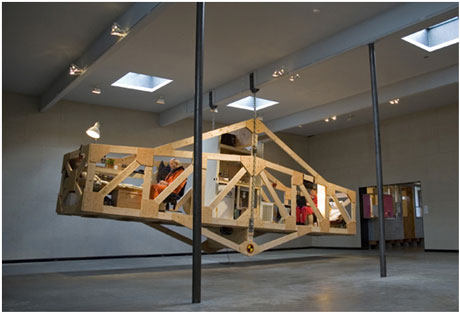
Bio
Alex Schweder La, based in Berlin, works with architecture and performance art to complicate the distinction between occupying subjects and occupied objects. These projects include Flatland at New York’s Sculpture Center, Its Form Follows Your Performance at Berlin’s Magnus Muller, A Sac of Rooms All Day Long at the San Francisco Museum of Modern Art, Counterweight Roommate in Scope Basel, and Roomograph at the deCordova Museum. His projects have been funded by the Pollack Krasner and Graham Foundations. Schweder La is the author of Stalls Between Walls included in Ladies and Gents, the Gendering of Public Toilets and Performance Architecture included in Urban Interiors. He is a three-time artist in residence at the Kohler company and was in residence at the Chinati Foundation and the American Academy in Rome. Schweder has been a guest professor at the Southern California Institute of Architecture and the Institute for Art and Architecture in Vienna. He is currently pursuing his PhD in architecture at the University of Cambridge in the UK and received his Masters degree in architecture from Princeton University.
Lab Abstract
Archipants/ Occutects Our laboratory will interpret the concept of hybridity under the assumption that a hybrid is the result of two or more things thought of as separate being brought together into a relationship that produces something distinct enough to consider it a third thing. For the sake of this laboratory, the originally distinct things will be the architect and the occupant. These two roles are, for the most part, thought of as discrete. An architect first designs a building with the intention of organizing the relationships between its future occupants. Occupants then come and use the building in a way that more or less follows the intention of the architect; they enact the script that the architect lays out for them. Modern forms of western cultural production often follow this model: composers and musicians, playwrights and actors, designers and consumers, etc.
What if the role of an architect and an occupant were considered to be a hybrid; what if the definition of architect and occupant did not follow a strict temporal line but worked back and forth with roles reversing; what would happen if an occupant were given greater agency in the production of space?
These are the questions that will be explored in our laboratory by making a project that takes cues from the history of performance art and focusing on the mutually constructive relationship between viewer and performer found therein. I have developed these themes in courses taught on performance and architecture at the Southern California Institute of Architecture in Los Angeles and the Akademie der Kunst in Vienna.
Depending on the budget and materials at hand I will work with the participants in our laboratory section to create a work that probes these questions. My past works, shown in the portfolio, have included live in structures. We will likely make a building that is performed by the audience in some way, though the exact parameters of the building will be determined through further discussions with the organizers of the laboratory about the location of the work, the audience, and cost. However, the participants will likely use the 5 days to make a performance that results in a building. Using themes such as negotiation of limited resources, such as space and materials, the students will need to modify a predetermined set of parameters. For example they might be given the task of modifying single pieces of furniture to suit the needs of different times of day, a sofa that turns into a desk that turns into a bed that turns into a sofa until the materials simply cannot be used anymore. Or they might be given a mobile trailer big enough for one and modify it for two.
In the end, it is my hope that participants will come to understand the objects in our world as plot devices, things that keep a larger narrative moving forward, rather than an end in and of themselves.
> Sigríður Sigurjónsdóttir (K - Kilo)
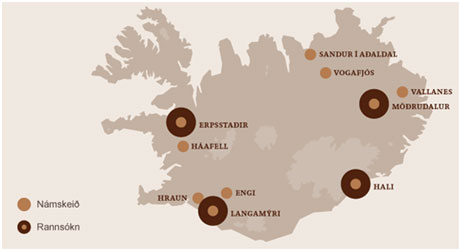
Bio
Sigríður Sigurjónsdóttir is a professor of product design at The Iceland Academy of the Arts since 2005. She graduated from Central Saint Martins College of Art and Design in 1999, MA Design Studies. At Central Saint Martins she was researching digital artifacts and personal space. Sigríður worked briefly for Intel through Central Saint Martins Design Lab before moving to Amsterdam where she worked on cultural localization of digital products for UPC. In 2002 Sigríður moved to London to work as an application designer for red fig who´s clients where among others BBC and Channel 4. Sigríður has worked on various design projects and participated in exhibitions worldwide. In 2010 she opened the design gallery SPARK design space in Reykjavík. SPARK is a platform for excellent design projects with a focus on local initiatives that involve collaboration between designers and other professions.
Lab Abstract
The 5 day workshop springs out off a 5 month workshop and research project that we have been developing at the Iceland Academy of the Arts for the past four year. See www.designersandfarmers.com.
The initiative has resulted in new unique farmers products on the market in Iceland as well as a farmers community that is aware and excited about the possibilities of working with designers. The project is already seeing its multiplying effect in our graduate students who are now working independently with farmers.
The novelty of the project lies in the bringing together one of the oldest professions, farmers, and one of the youngest professions, designers. The designers are invited to meet with a local farmer, with the purpose of creating a new unique regional product with a cultural reference. The aim of the project is to come up with ideas and developing products which should create economic benefit for the farmers by increasing the value of their produce.
Today Qatar imports 90% of its food requirements. There are 1400 farms and the aim is to increase them to 3000.
The 5 day workshop will be is a mix of lectures, visits and work in the studio. The students will work in small groups. It is important that students familiarize themselves thoroughly with the farmer, the history of the farm (and area), activities on the farm, the farmer’s produce and his future vision. Following on from this, we use the methodology of design to map the feeling we would like create for the farmer and his products. Together we will search for the base, core and the differentiating values for that particular farm. Built on that work we will sketch on paper, in spoken words, and in the farmers raw material, proposals for product development. These proposals can hint towards a specific product or be more focused on the feeling we are seeking to create. The final display will be made from the farms raw materials, it should explode the idea we have of that material and open up a discussion on how Qatar can increase its farming, add value to it, arouse awareness and find its true uniqueness.
> Jeff Turko (L - Lima)
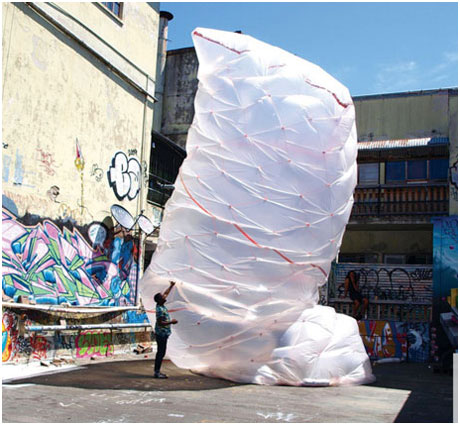
Bio
Jeffrey P. Turko is a research director in the OCEAN Design and Research Association, and is the founder of the design practice NEKTON Studio. With OCEAN he has worked on high profile projects such as the Landscraper Bridge and the new World Trade Center proposal for the Max Protetch Gallery in New York, the “World Center for Human Concerns.” He is currently leading the newly established research area in OCEAN on Heterogeneous Grounds and Envelopes.
With his design practice NEKTON Studio he has gone onto success in international design competitions, most notably the TURF CITY master plan competition for Reykjavik, and he has represented the UK in the 2008 Beijing Biennial in Architecture.
Jeffrey is also an academic and began his teaching career at the AA School soon after completing his studies there in 1999. He then went onto become a senior lecturer at the University of East London teaching design at the post graduate diploma level for over a decade. He returned to the AA to teach again between 2008 & 2010 as Diploma unit Master of the highly successful Diploma Unit 12, and in 2011 he took the directorship of the AA Visiting School in Sydney Australia. Currently he has taken the post of Senior Lecturer in Architecture at the University of Brighton.
Lab Abstract
Inflated Graphic Space: Extending Thresholds
This LAB will look at the theme of Hybrid Making as an opportunity to mix the disciplines of architecture & graphic design into a 1:1 scale construction. Hybridizing the rich Islamic geometric graphic patterns that have been used to order space and structure with the design methods of inflatable’s that produce deployable lightweight structures.
This will be underpinned by the theme of the Extended Threshold and the use of supplementary or 2nd degree auxiliary architectures as a potent means to organize space and modulate micro-- climatic environments. This might be achieved through an extended architectural threshold between interior and exterior conditions, articulating a territory of ground in a landscape, or establishing a new envelope in an existing interior condition.
Ant Farm’s Inflatocookbook will provide us with the basic know--how for constructing these lightweight spaces and structures and the mathematical rigors of Islamic patterns will act as our touchstone for the exploration of forms and patterns for construction. The use of digital tools such as 3D modeling/manufacturing, and analogue methods of the hands--on making of prototypes will be used to explore the hybridizing of these two elements and to develop the methods needed for assembly.
Students should have a basic knowledge of CAD and Rhino3D software for digital modeling.
> Simone Muscolino, Jorell Legaspi, Jordan Gushwa (M - Mike)
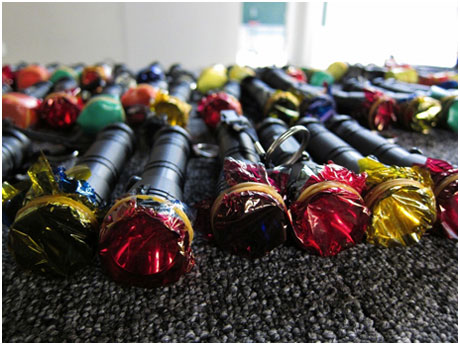
Bios
Simone Muscolino
Simone Muscolino is a multidisciplinary designer and video-maker. He holds a Master in Architecture from Polytechnic University of Turin, Italy, with a professional focus on interaction-design and time-based media.
He worked as professor and video consultant at Interaction Design Institute Ivrea, where he was also one of the project leaders of e1 (Exhibition Unit), a design unit active on various projects for public and private clients.
He co-founded and partnered Interaction Design Lab, a Milan based company working in the crossover between technology and design.
He teaches Time Studio in the Foundation Department of VCUQatar.
Jorell Legaspi
Jorell Legaspi is the Creative Head of Communications at Mathaf: Arab Museum of Modern Art in Qatar, overseeing graphic design and multimedia production.
He has a Bachelor of Arts degree in Broadcast Communication from the University of the Philippines-Diliman, where he trained in program conceptualization, development, and scriptwriting for television and radio. He pursued his passion for music, entertainment and pop-culture, working in Marketing and Television Promotions at BMG Records (now Sony Music), andlater as Cultural Officer at the Alliance Française de Manille, where he collaborated with a bustling art and design community to activate cultural engagement between the Philippines and France.
Born and raised in the Gulf, Jorell is personally involved in contributing to creative growth in Qatar and mentoring local talents. Before joining Mathaf in 2010, Jorell was the Head of Design and Photography Services at The Art of Business, publisher of Qatar Happening, where he led a small creative team in transforming the small monthly eventsguide into a popular full-sized magazine. He is also a portrait and fashion photographer, collaborating with Doha based stylists, designers andmodels, and contributing to Middle East editions of Sur La Terre, Esquire and Harper's Bazaar.
Lab Abstract
Having the main goal of documenting the activities of the other labs, this lab will explore rapid video-making processes, mixing video-interviews, motion graphics, time-lapse, fast editing.
Students will actively observe the labs throughout the week and capture the ups and downs of the creation process in realtime.
A series of short documentary films will be produced on a daily basis and uploaded to social networks to take advantage of spontaneous sharing and learning.
At the end of the working week, the daily fragments will be edited together to create a comprehensive documentary about every single lab. The videos will be the core elements of the Labs exhibition which will be set up both at the Mathaf and the Student Centre.
© Virginia Commonwealth University in Qatar / Contact / Archive: Tasmeem 2011




